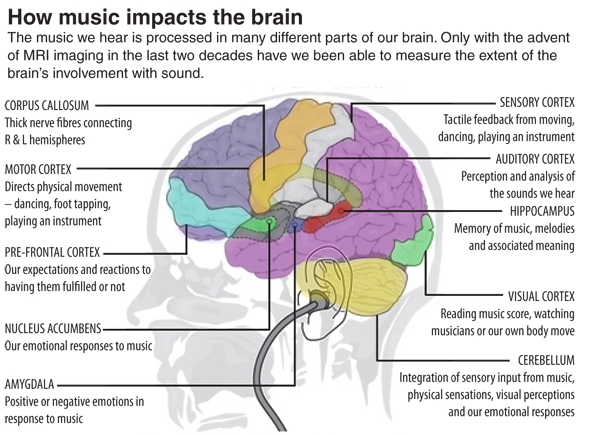8.7 How does Sound Therapy Affect the Right and Left Brain Hemispheres?

Sound Therapy increases lateral connections and integrates the two brain hemispheres.
Our brain really is structured as two separate brains, the right and left hemispheres. They are joined by an incredibly dense and complex mass of inter-connections called the ‘corpus callossum’.
The degree of functionality and speed of the corpus callossum is integral to our effective functioning. Increasing the efficiency and the number of connections in the corpus callossum can enhance our functioning in many ways.
The stimulus of Sound Therapy enhances this right left brain integration.
![leftbrain_rightbrain2[1]](https://soundtherapysynergy.com/wp-content/uploads/leftbrain_rightbrain21.jpg)

A debate has raged for decades over whether lack of left brain dominance causes dyslexia. The mistake made by most of these theorists is that they used left-handedness as the measure of right brain dominance. Tomatis, however, looked more deeply into the question, and learned that it is not the dominant hand which is at issue, but the dominant ear. Left-earedness is sometimes, but not always, reflected by left-handedness. In the words of one specialist educator from Los Angeles who has spent decades studying and treating dyslexics, ‘it doesn’t matter if the person is left-eyed, left-handed left-legged, or “left” anything, it will not necessarily cause a problem. But if they are left-eared, they will have a learning difficulty.’
Sound Therapy builds and organises brain connections. Occasionally left handed children will spontaneously switch to being right handed when they use Sound Therapy. This indicates that the organisation of laterality in the brain has reorganised itself in a more streamlined manner. However, we have never heard of a change of handedness occurring in an adult as the pathways are much more entrenched by this time, and the individual has found ways of working around their more unique laterality arrangement. Nevertheless, personal organisation coordination and other habits may still improve as a result of Sound Therapy.
Tomatis believed that the right ear must be the leading ear and that this is the key to proper listening. Another way he expressed the roles of the two sides of the brain is that the right hemisphere is the instrument, and the left hemisphere is the virtuoso, or the one which executes. Right is passive, left is dynamic and active. Tomatis’ findings in this regard were experimentally reproduced. By having people monitor themselves with the left ear, they produced experimental dyslexics. Thus we know that right ear dominance is the key to better brain organisation at many levels, affecting all of our sensory pathways.
It is very clear that Sound Therapy enhances left brain functions, primarily seen in the improvement of language skills. However, it is also apparent that right brain functions improve as well, since we also see better spatial judgement, physical coordination and technical aptitudes.


